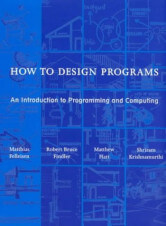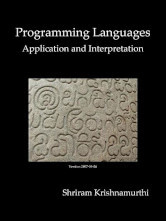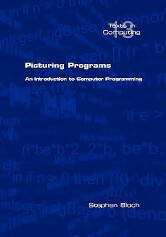Last Updated on September 19, 2025
Racket is a general-purpose, object-oriented, multi-paradigm, functional, imperative, logic based programming language based on the Scheme dialect of Lisp. It’s designed to be a platform for programming language design and implementation.
Racket is also used to refer to the family of Racket programming languages and the set of tools supporting development on and with Racket. It has a powerful cross-platform GUI library built in.
Racket’s core language includes macros, modules, lexical closures, tail calls, delimited continuations, parameters (fluid variables), software contracts, green and OS threads, and more. The language also comes with primitives, such as eventspaces and custodians, which control resource management and enables the language to act like an operating system for loading and managing other programs.
Racket is often used for scripting, computer science education, and research. It’s an open-source project (Apache/MIT).
Here’s our recommended books to learn Racket.
1. How to Design Programs, Second Edition by Matthias Felleisen, Robert Bruce Findler, Matthew Flatt, Shriram Krishnamurthi
 How to Design Programs introduces the concept of a design recipe, a six-step process for creating programs from a problem statement.
How to Design Programs introduces the concept of a design recipe, a six-step process for creating programs from a problem statement.
The authors explain the design process starts with a careful analysis of a problem statement with the goal of extracting a rigorous description of the kinds of data that the desired program consumes and produces. The structure of these data descriptions determines the organization of the program.
The book the proceeds to introduce data forms of progressively growing complexity. It starts with data of atomic forms and then progresses to compound forms, including data that can be arbitrarily large. For each kind of data definition, the book explains how to organize the program in principle, thus enabling a programmer who encounters a new form of data to still construct a program systematically.
The book is licensed under the Creative Commons CC BY-NC-ND license.
2. Programming Languages: Application and Interpretation by Shriram Krishnamurthi
 This book unites two approaches to teaching programming languages, one based on a survey of languages and the other on writing definitional interpreters.
This book unites two approaches to teaching programming languages, one based on a survey of languages and the other on writing definitional interpreters.
It has been used as a textbook at over fifteen institutions worldwide, and is referenced by non-academic users on the Web. The book is updated approximately frequently.
3. Picturing Programs: an Introduction to Computer Programming by Stephen Bloch
 Picturing Programs is a textbook for beginning computer programming.
Picturing Programs is a textbook for beginning computer programming.
This book can be used at the high school (and perhaps middle school) level, while providing enough advanced concepts not usually found in a first course to challenge a college student. Those who have already done some programming (e.g. in Java, Python, or C++) will enhance their understanding of the fundamentals, un-learn some bad habits, and change the way they think about programming.
This material is based upon work supported by the National Science Foundation.
Next page: Page 2 – Beautiful Racket and more books
Pages in this article:
Page 1 – How to Design Programs and more books
Page 2 – Beautiful Racket and more books
All books in this series:
| Free Programming Books | |
|---|---|
| Ada | ALGOL-like programming language, extended from Pascal and other languages |
| Agda | Dependently typed functional language based on intuitionistic Type Theory |
| Arduino | Inexpensive, flexible, open source microcontroller platform |
| Assembly | As close to writing machine code without writing in pure hexadecimal |
| Awk | Versatile language designed for pattern scanning and processing language |
| Bash | Shell and command language; popular both as a shell and a scripting language |
| BASIC | Beginner’s All-purpose Symbolic Instruction Code |
| C | General-purpose, procedural, portable, high-level language |
| C++ | General-purpose, portable, free-form, multi-paradigm language |
| C# | Combines the power and flexibility of C++ with the simplicity of Visual Basic |
| Clojure | Dialect of the Lisp programming language |
| ClojureScript | Compiler for Clojure that targets JavaScript |
| COBOL | Common Business-Oriented Language |
| CoffeeScript | Transcompiles into JavaScript inspired by Ruby, Python and Haskell |
| Coq | Dependently typed language similar to Agda, Idris, F* and others |
| Crystal | General-purpose, concurrent, multi-paradigm, object-oriented language |
| CSS | CSS (Cascading Style Sheets) specifies a web page’s appearance |
| D | General-purpose systems programming language with a C-like syntax |
| Dart | Client-optimized language for fast apps on multiple platforms |
| Dylan | Multi-paradigm language supporting functional and object-oriented coding |
| ECMAScript | Best known as the language embedded in web browsers |
| Eiffel | Object-oriented language designed by Bertrand Meyer |
| Elixir | Relatively new functional language running on the Erlang virtual machine |
| Erlang | General-purpose, concurrent, declarative, functional language |
| F# | Uses functional, imperative, and object-oriented programming methods |
| Factor | Dynamic stack-based programming language |
| Forth | Imperative stack-based programming language |
| Fortran | The first high-level language, using the first compiler |
| Go | Compiled, statically typed programming language |
| Groovy | Powerful, optionally typed and dynamic language |
| Haskell | Standardized, general-purpose, polymorphically, statically typed language |
| HTML | HyperText Markup Language |
| Icon | Wide variety of features for processing and presenting symbolic data |
| J | Array programming language based primarily on APL |
| Java | General-purpose, concurrent, class-based, object-oriented, high-level language |
| JavaScript | Interpreted, prototype-based, scripting language |
| Julia | High-level, high-performance language for technical computing |
| Kotlin | More modern version of Java |
| LabVIEW | Designed to enable domain experts to build power systems quickly |
| LaTeX | Professional document preparation system and document markup language |
| Lisp | Unique features - excellent to study programming constructs |
| Logo | Dialect of Lisp that features interactivity, modularity, extensibility |
| Lua | Designed as an embeddable scripting language |
| Markdown | Plain text formatting syntax designed to be easy-to-read and easy-to-write |
| Objective-C | Object-oriented language that adds Smalltalk-style messaging to C |
| OCaml | The main implementation of the Caml language |
| Pascal | Imperative and procedural language designed in the late 1960s |
| Perl | High-level, general-purpose, interpreted, scripting, dynamic language |
| PHP | PHP has been at the helm of the web for many years |
| PostScript | Interpreted, stack-based and Turing complete language |
| Prolog | A general purpose, declarative, logic programming language |
| PureScript | Small strongly, statically typed language compiling to JavaScript |
| Python | General-purpose, structured, powerful language |
| QML | Hierarchical declarative language for user interface layout - JSON-like syntax |
| R | De facto standard among statisticians and data analysts |
| Racket | General-purpose, object-oriented, multi-paradigm, functional language |
| Raku | Member of the Perl family of programming languages |
| Ruby | General purpose, scripting, structured, flexible, fully object-oriented language |
| Rust | Ideal for systems, embedded, and other performance critical code |
| Scala | Modern, object-functional, multi-paradigm, Java-based language |
| Scheme | A general-purpose, functional language descended from Lisp and Algol |
| Scratch | Visual programming language designed for 8-16 year-old children |
| SQL | Access and manipulate data held in a relational database management system |
| Standard ML | General-purpose functional language characterized as "Lisp with types" |
| Swift | Powerful and intuitive general-purpose programming language |
| Tcl | Dynamic language based on concepts of Lisp, C, and Unix shells |
| TeX | Markup and programming language - create professional quality typeset text |
| TypeScript | Strict syntactical superset of JavaScript adding optional static typing |
| Vala | Object-oriented language, syntactically similar to C# |
| VHDL | Hardware description language used in electronic design automation |
| VimL | Powerful scripting language of the Vim editor |
| XML | Rules for defining semantic tags describing structure ad meaning |
